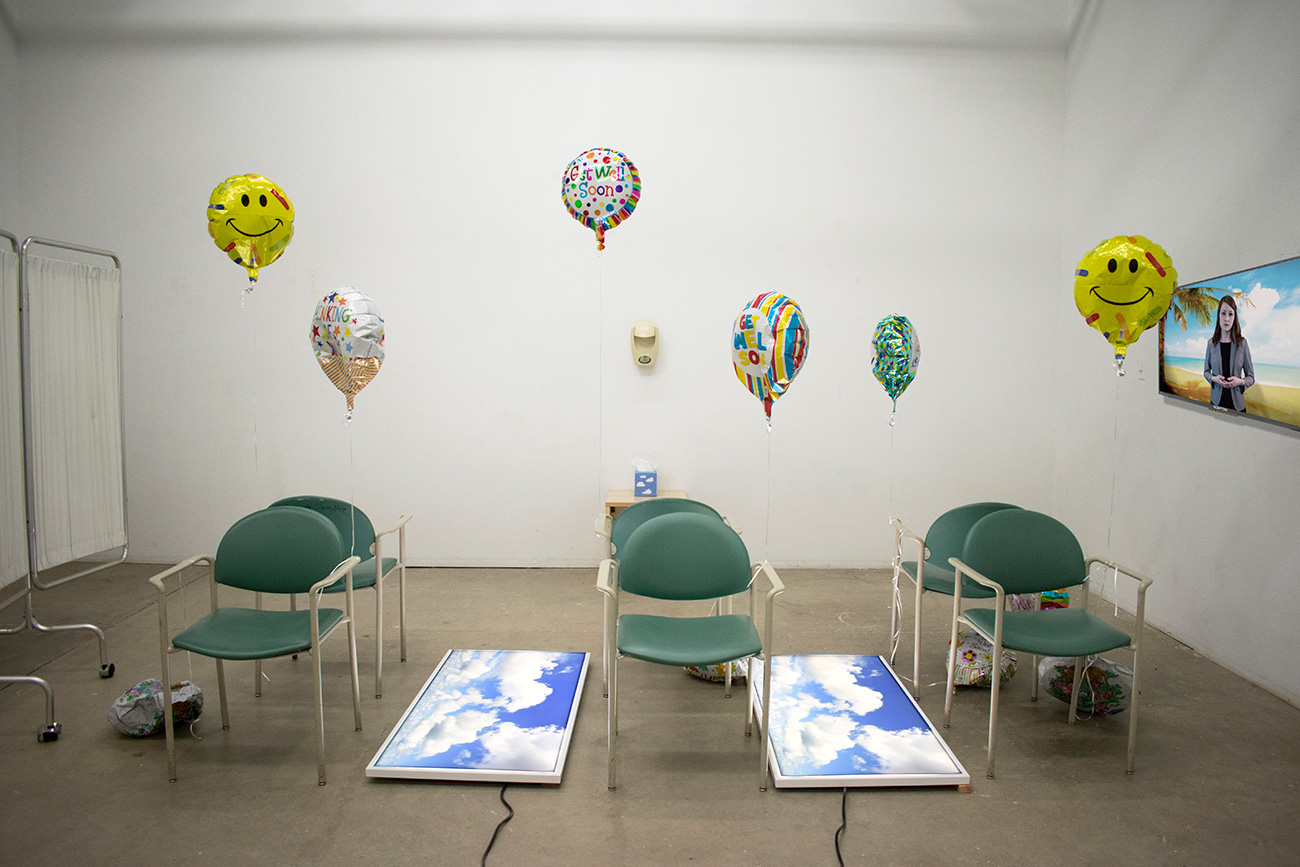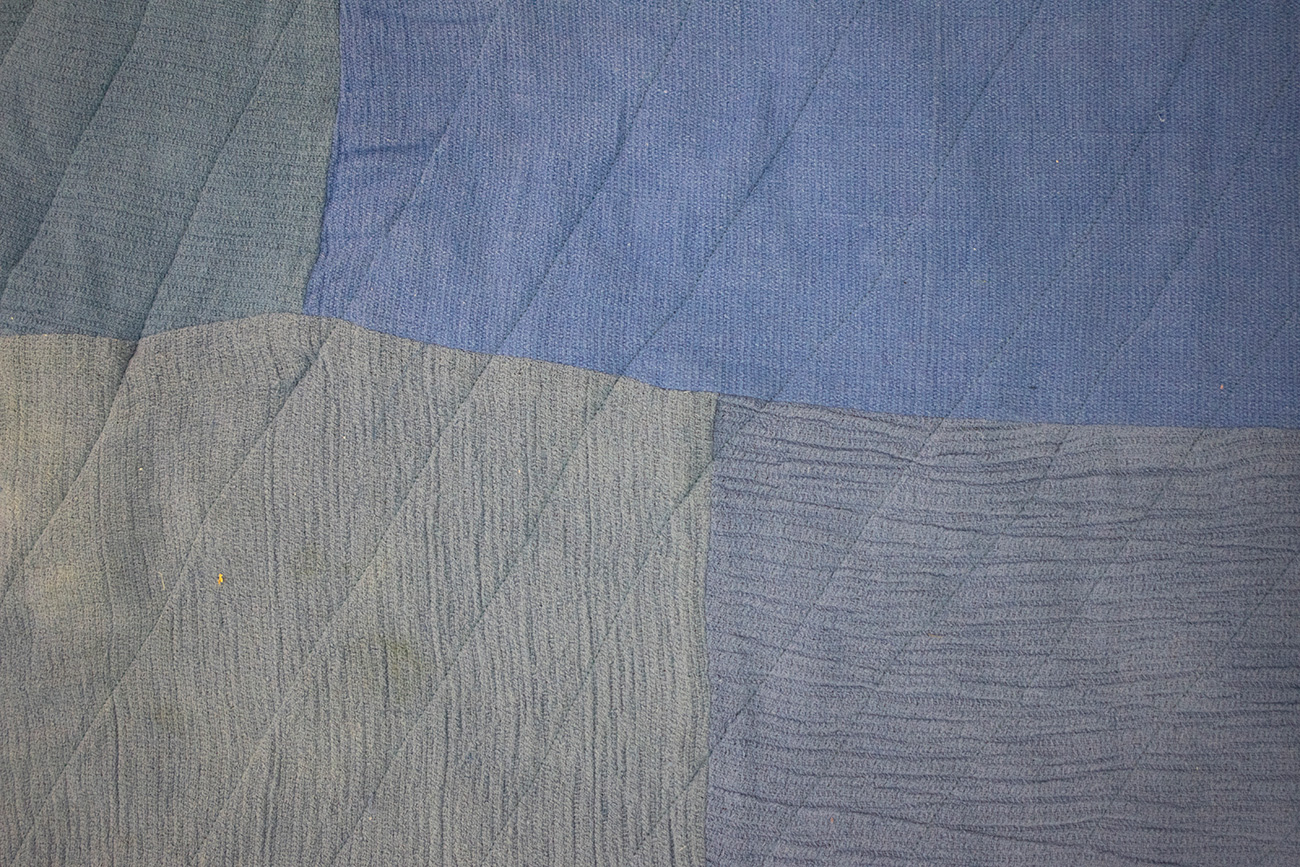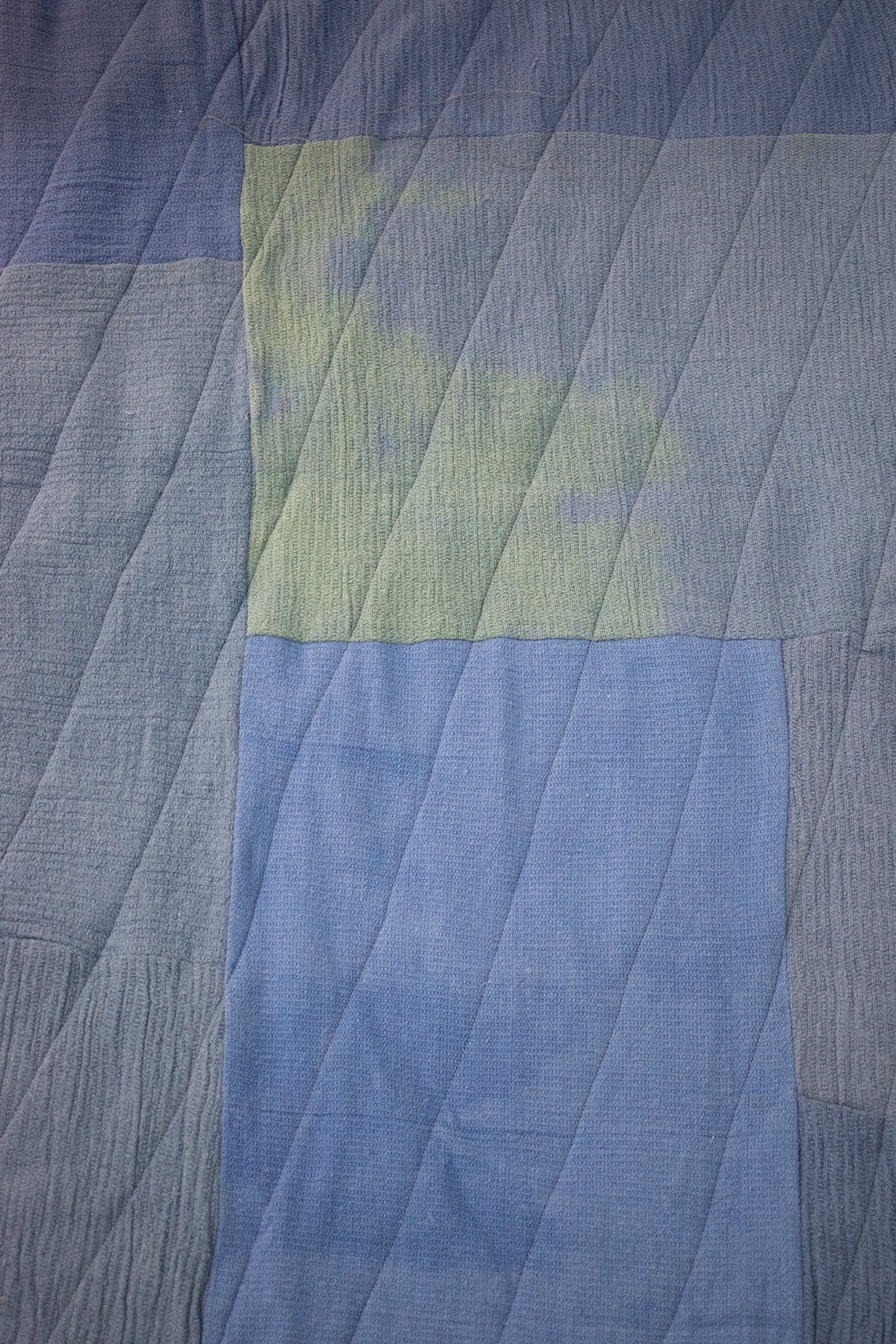
Anaesthetics
Sally Ann McKinsey
waiting room chairs and table, mylar balloons, hand sanitizer dispenser, troffer lights, manufactured light covers, stuffed bear, hospital gown, yarn, plastic canvas, tissue box, hospital partition


The lobby, the gift shop, the waiting room: thresholds in clinical space, liminal areas where cultural patterns and beliefs about illness and healing become visible. Stock images and canned sentiments attempt to cover up or avoid the difficult experiences of those who reside here. Standardized tropes like “Get Well Soon” reflect an impulse to control situations of uncertainty and a culture of alienation that lacks verbal and visual language for living with mortality.

Panic Management is made with found language from hospital-sponsored videos related to patient experience and introduction to clinical space. Found video showing stock "calming nature scenery" investigates standardized cultural attempts to avoid discomfort, re-contextualizing them to point to their inadequacy in the face of trauma, pain, and uncertainty.




Light covers are attempts to hide unpleasant fixtures in clinical space while manufacturing an artificial connection to the natural world. Homemade tissue box covers are also decorative facades that hope to beautify or comfort but provide no other functional purpose. An empty hand sanitizer dispenser hanging on the wall becomes a metaphor for sterilization in interpersonal exchange, since language can work as a façade to cover or ignore unpleasantness or pain.






Code Blue
Sally Ann McKinsey

Framing the hospital room as sacred space, this work explores fiber crafts like rug-making and quilting using textiles from clinical settings. As beds and pillows are vessels for holding the body, so are quilts, rugs, towels, gowns, socks, and sheets. Viewers are invited to remove their shoes, gather close to objects, and be enveloped in the space. Removing shoes becomes an invitation to vulnerability. To do so in the midst of clinical materials is to treat them differently than we do in biomedicine. We uncover the body rather than covering it for protection; we remove barriers rather than constructing them. In the midst of COVID-19, this is unimaginable. Code Blue, then, becomes a vision of what is impossible and a way to hold the pain of clinical space in care and hope.

reclaimed surgical towels, scrubs, operating room sheets, hospital socks, hospital gowns, emergency room thermal blankets, troffer light fixture, oxygen tubing

Placing medical diagnostics and social support in conversation, videos are made with an endoscope camera probing food items. This work explores practices of giving food during times of illness or loss and the connections between food, caregiving, the body, and dying.










Sally Ann McKinsey is an interdisciplinary artist and educator who recently earned her MFA from the University of North Carolina Chapel Hill. She also received a Master of Divinity from Columbia Theological Seminary in 2013 and is the co-creator of Utilities Included, an artists collective, exhibition space, and small editions publisher. See more work here and on Instagram.